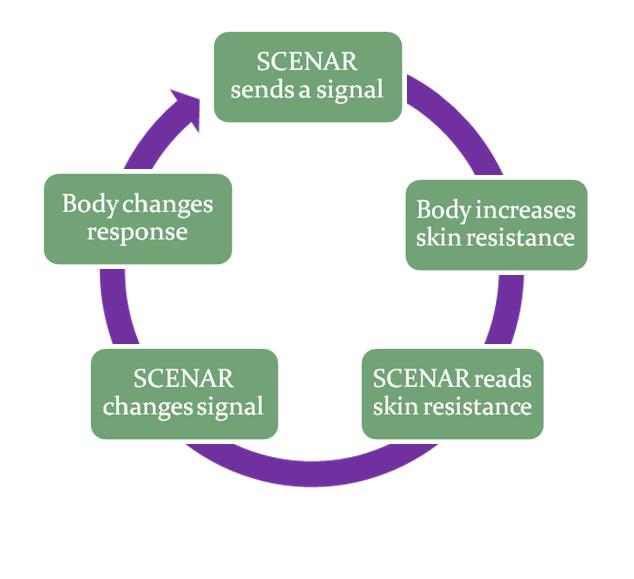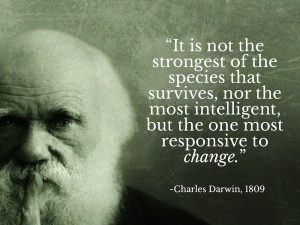SKENAR — technology of drug-free Treatment
The legend has it that SKENAR was developed within the Soviet Space Program for cosmonauts to keep them healthy while in space. Later the SKENAR was dubbed a “Star Trek healing device” by the Western press, and in the last 30+ years, there were many situations where it turned out to be not such an overstatement after all.
In order to give cosmonauts what they needed in space, a universal Personal Health Assistant, the SKENAR inventor Alexander Karasev attempted a revolutionary new approach that merged medicine and quantum physics, Eastern and Western health paradigms (conventional and holistic medicine), and even science and religion.
The SKENAR idea emerged from a humble awareness that no matter how hard we try, the human mind will never be able to grasp the complexity of the inner workings of a human body – hence, all our attempts to “diagnose” a disease will always be to some degree a guesswork and, therefore, will always leave some room for mistakes. The only way to avoid that is to give control over therapy to the only entity that knows exactly what’s going on and has a plan how to fix it – the body itself.
That’s how the ADAPTIVE electrical stimulation was born – and SKENAR as the first implementation of it.
SKENAR is an acronym, which stands for Self-Controlled Energo-Neuro-Adaptive Regulation (Regulator).
SKENAR was designed as a simplified, but nevertheless a feedback-based analog of a living system – self-controlling and self-regulating electronic “mirror” constantly adapting to the body and its needs and gently guiding and supporting it in its healing efforts.
SKENAR had two unique and distinctive features that set it apart from any other electrical stimulator.
• The first feature is the SHAPE of SKENAR impulses that resembles the shape of natural neuro-impulses – the signals that our nerves use to transmit information and communicate. The body, therefore, recognizes SKENAR impulses as something familiar and enters into a “dialog” with the device.
• The second distinctive feature of SKENAR is its ability to constantly adapt to the body by dynamically changing its signals in accordance with the FEEDBACK the device receives from the body. The feedback is read through the spontaneous changes in the electrical resistance of the skin (impedance) when the body responds to stimulation and does not involve any conscious efforts. The device signals will be changing as long as the body changes the local impedance and continues the “dialog”, which solves the problem of the body getting used to the stimulation and developing tolerance.
The adaptability of the SKENAR made it operate similarly to the living systems that adapt to their environment via constantly functioning feedback loops. When connected to the body, the SKENAR became “an electronic mirror”, another dynamic system the body could check and balance itself against. That was a know-how that dramatically enhanced the body’s ability to heal itself (prompting the “Star Trek healing device” analogy) and that more than three decades ago only the SKENAR could provide.
SKENAR was a very effective treatment technology, which, however, in its first implementation (SKENARs of the first generation) had a few flaws.
SKENAR is a method of a “big stimulus”. In the first generation SKENARs, the acting impulse is artificially increased mimicking the pain impulse, in order to attract the body’s attention to the diseased part. In a way, SKENAR is a “pain amplifier” that elicits the amplified restorative reaction of the body.
This approach of “big stimuli” is rather inaccurate and requires complicated protocols in order to determine the precise location of the stimulus application, which limits the SKENAR’s therapeutic potential. At the same time, SKENAR today remains the best method of natural pain relief.
SKENAR is the technology of motivating the body to fight disease by “adding to pain”.
SKENAR: How It Works
© Dr. Irina, November 2005
SKENAR is an acronym, which stands for Self-Controlled Energo-Neuro-Adaptive Regulation (Regulator).
In brief, SKENAR is an ADAPTIVE electrical stimulator. Even though it belongs to the same group of electro-therapy devices as the well-known TENS unit (non-invasive low-frequency electro-stimulators), the fact that it adapts to the human body, instead of making the body adapt to the device (which is the case with TENS), makes it very different. So different, that SKENAR is sometimes compared to a living system.

There is a certain merit to this comparison. The main working principle of SKENAR is the same that all living systems use – the principle of auto-stabilization based on a FEEDBACK mechanism. Being placed on the skin, the SKENAR sends electrical signals to the body, which are very similar to the messages our nerves send each other (the shape of the SKENAR signal resembles the shape of a natural neuro-impulse). The body responds to the familiar stimulation in an adaptive manner, changing the electromagnetic properties of the skin in the area of stimulation. The SKENAR then screens that information and, using an adaptive feedback loop, modifies its own signals according to the perceived body response. Thus the SKENAR feedback feature allows opening a dialogue between two systems: the body and the device, which continues until the body completely adapts to the SKENAR.
In the process of ‘the body – the device’ dialogue no one SKENAR impulse is identical to the previous one, following the continuous dynamic changes of the body. That prevents the early body adaptation to electrical stimulation – the downfall of the majority of TENS units.
The continual electrical stimulation provides for massive release of certain biochemical substances, called Neuropeptides, or Regulatory Peptides (RP), in the nervous system (in particular, C-type nervous fibers forming most of the autonomic nervous system). The RPs, due to its chemical particularities, represent our body’s internal pharmacy of low molecular hormones, which keep us in physiological balance known as the state of health. Serving as a ‘packages of programs’, they turn on and off various processes in the body, including healing reactions. Blockage or delay of RP release results in slow or blocked healing. In this state, the body does not finalize the program of disease and keeps it inside in the ‘dormant’ state like some sort of an ‘energy cyst’, or the place where energy dynamics is extremely slow.
 We all accumulate such ‘energy cysts’ with age. Some of them develop not only on the physical but also on mental/emotional or even spiritual levels. As stagnant ‘energy cysts’ emit repetitive signals, our body soon adapts to them and stops paying attention, merely keeping them in isolation behind the protective barriers of local adaptive reactions. The ‘energy cysts’ deplete our energy resources, making it progressively more difficult for us to heal, and can be a ‘time bomb’ if our body for one reason or another weakens. The challenging SKENAR influence and the SKENAR-induced release of Regulatory Peptides in large quantities break the stability and rigidity of unfinished programs of diseases, helping the body develop, finalize, and eventually eliminate them from our cellular memory.
We all accumulate such ‘energy cysts’ with age. Some of them develop not only on the physical but also on mental/emotional or even spiritual levels. As stagnant ‘energy cysts’ emit repetitive signals, our body soon adapts to them and stops paying attention, merely keeping them in isolation behind the protective barriers of local adaptive reactions. The ‘energy cysts’ deplete our energy resources, making it progressively more difficult for us to heal, and can be a ‘time bomb’ if our body for one reason or another weakens. The challenging SKENAR influence and the SKENAR-induced release of Regulatory Peptides in large quantities break the stability and rigidity of unfinished programs of diseases, helping the body develop, finalize, and eventually eliminate them from our cellular memory.
In other words, SKENAR in interaction with the body helps it complete its adaptive reactions. From a SKENAR point of view, any disease is an inadequate (too slow) adaptive reaction. That means that disease is not an unwanted and dangerous stranger for us; it is natural and even necessary for the body process, which makes us stronger and helps us grow. Healing starts with the disease.
We live in the world of systems. This is the way the Universe is organized. We consist of them – and become a part of them. The Universe itself is the largest living system, holographically repeating itself in its every part so that the atom looks just like the Solar system. As far as information is concerned, the size does not matter. Our body’s intelligence reflects the universal cosmic knowledge at all times, and the only question is how we can evoke this knowledge and make it work for us.
 All living systems have similar basic structure and work in a similar manner – a microcosm reflecting the macrocosm. They are self-controlling, self-regulative, and self-reproductive and utilize the feedback mechanism for auto-stabilization. Systems keep the stability of internal environment (homeostasis) while exchange substance, energy and information with the ever-changing outside world in a constant fashion. The coherent state of balance between inner and outer worlds is achieved through ADAPTATION.
All living systems have similar basic structure and work in a similar manner – a microcosm reflecting the macrocosm. They are self-controlling, self-regulative, and self-reproductive and utilize the feedback mechanism for auto-stabilization. Systems keep the stability of internal environment (homeostasis) while exchange substance, energy and information with the ever-changing outside world in a constant fashion. The coherent state of balance between inner and outer worlds is achieved through ADAPTATION.
Adaptation keeps us alive and coherent, attuned to the world, which ensures the state of health. If adaptation is inefficient and slow, homeostasis is affected and we get sick. From this point of view, the disease is a slow adaptive reaction. By helping adaptation, we help the system restore homeostasis and regain health. In the process of doing it, the system matures and evolves.
Adaptation depends on COMMUNICATION. Fast communication between various bodily structures ensures the efficiency of adaptation. SKENAR, providing for the massive release of Regulatory Peptides as messenger molecules, quickly improves information exchange in the body, which results in dramatic acceleration of adaptive reactions. This pushes forward the cyclical program of disease and provides conditions for its completion. SKENAR assists the body in recognizing the existence of ‘energetic cysts’, in establishing priorities in their elimination and in dealing with them one by one, until all the programs running on the background of the body’s computer are closed.
The healing process continues until this is achieved, and the body energy resources are free from stagnation and blockages. The body restores its coherent state, being synchronized with the bigger systems, of which it is a part. It is now ‘at peace with itself and with the world’. In this healthy state, adaptation works with maximum efficiency and new challenges are easily dealt with, either they are of physical or mental/emotional or even spiritual nature. SKENAR is a truly wholistic technology.
Dr. Irina K, MD, Ph.D., DNM









